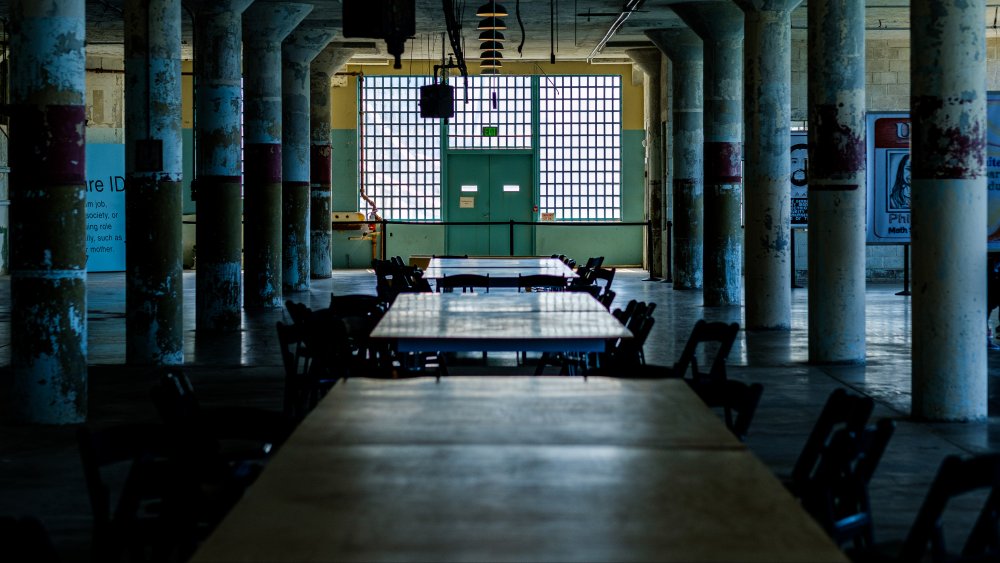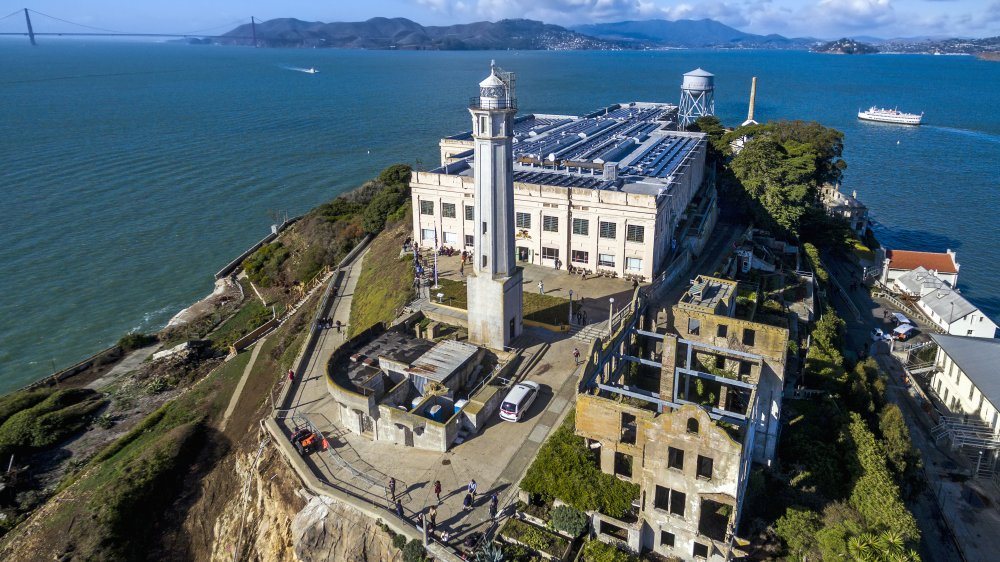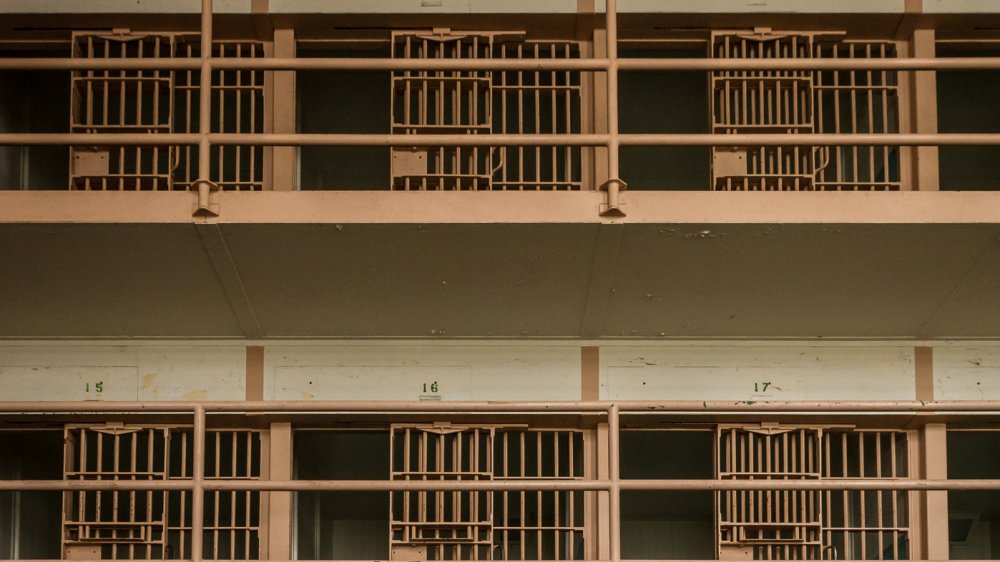The Surprising Perks Alcatraz Had That Other Prisons Didn't
Food, shelter, clothing, and medical care: according to Alcatraz History, these are the four rights due a prisoner at Alcatraz, the most notoriously brutal and strict prison in US history. Dubbed "The Rock," Alcatraz sits in San Francisco Bay as one of the remnants of a triad of fortified positions used by the US Army to protect the Bay in the mid-1800s, which also included Fort Point and Lime Point. Built by the hands of original military prisoners, as the Federal Bureau of Prisons reports, Alcatraz was converted into a civilian prison specifically designed to house the worst of the worst who wouldn't conform to prison rules elsewhere. They included legendary gangster Al Capone, George Kelly Barnes (aka "Machine Gun" Kelly — yes, like the rapper, and also a gangster), and Robert Stroud, "The Birdman of Alcatraz."
Prisoner conduct in Alcatraz had to be impeccable, and daily schedules were insanely choreographed, per Alcatraz History, down to five-minute intervals that regulated every minor behavior. This incessant surveillance fell to security guards, who filled the prison at a 1:3 ratio (the highest in the country), many of whom resided on the island. Prisoners lived alone in B and C block cells, a mere 5 feet wide and 9 feet long, including a sink with cold water and a toilet, or A block cells that only allowed prisoners to leave once a week for exercise purposes.
Even amidst such severity, inmates could earn privileges. Some unusual perks, however, were afforded automatically.
Absolute obedience earned humane privileges
Life in Alcatraz was all about obedience to rules, and for the Department of Justice and the Federal Bureau of Prisons, Alcatraz was all about constructing a model prison machine. Any inmate's attempt to dissemble, slow down daily processes, display insubordination, and so on, was recorded and cataloged. There was no rambling walking, no idling in cafeterias, no speaking out of place: nothing. There was a complex ranking system of regulations and rewards that resulted in rights revoked at every step, particularly yard time and recreation time, and rewards conferred for good behavior.
Over the course of its 30-year history, from 1934 to 1963, Alcatraz never reached its maximum capacity of a mere 336, less than one percent of the country's prisoners. All of the "good" prisoners during that time could gain access to the library, earn degrees, partake in sports and games like horseshoes and chess, and go on to have jobs in the other buildings on the island, as outlined on The Vintage News. Even though rules were so strict, inmates from other prisons sometimes requested to be transferred to Alcatraz because of its better overall living conditions and orderliness.
Still, prison is prison, and some railed against it. As stated on History, there were 36 escape attempts during the prison's life cycle. Even if escapees weren't shot by guards, the frigid water of San Francisco Bay would consume them. Thus came to be the first "perk" of Alcatraz.
Security measures disguised as generous perks
Alcatraz had one luxury that most other prisons lacked: "reasonably hot" showers. Even though showers weren't private, and had to be quick, they were at least not frigid. It's suspected that this unusually generous gesture was merely an attempt to prevent prisoners from getting acclimated to the cold water of the Bay. That way, if prisoners did manage to make it off the island, they would drown before reaching shore. Two men were confirmed to have drowned trying to escape. Five more went missing and were presumed drowned.
Another strange perk afforded residents of Alcatraz was oddly good food. "Bacon jambalaya, pork roast with all the trimmings, or beef pot pie Anglaise" appeared on the menu during the 1940s. As the Daily Mail says, Alcatraz was renowned for having the best food in the entire US prison system, and fresh ingredients were shipped to the island daily from the Bay Area. This wasn't merely the result of an overly ambitious prison chef, though. It was a very overt attempt to mollify prisoners: keep them full, keep them content, keep them docile, keep them less likely to disrupt order.
All of the money spent on such "perks" might have lent itself to Alcatraz's closure, however. By 1963 it simply cost too much to maintain, on top of the $3 million-$5 million needed for restoration of the then-decades-old facility. Today, the fearsome prison is merely a tourist destination of the National Parks Service.


